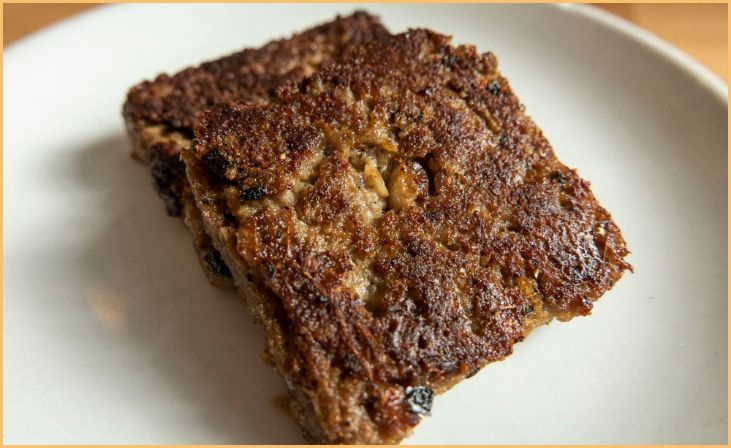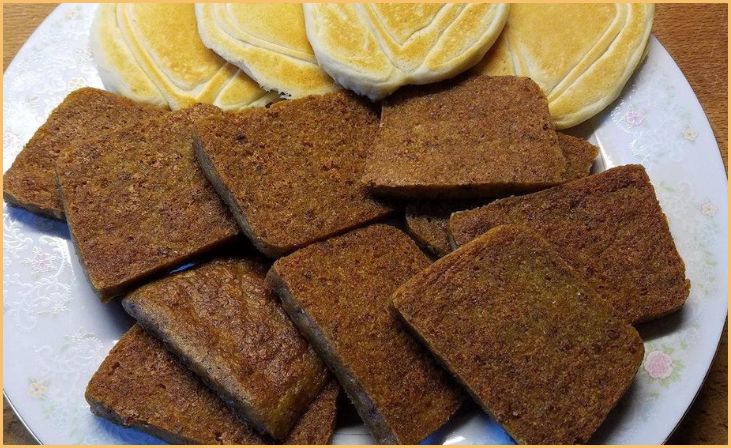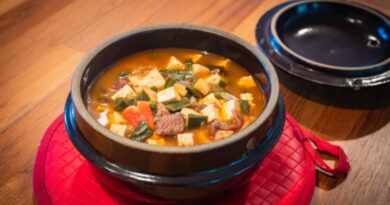What is Scrapple Made Of? Are you intrigued by the allure of a savory and wholesome breakfast staple that has captured the hearts and taste buds of many? Look no further than scrapple, a culinary gem originating from the heart of Pennsylvania. This beloved dish has garnered widespread attention and admiration for its distinct and robust composition, earning its place as a beloved comfort food among locals and visitors alike.
As we embark on this culinary exploration, we will delve deep into the rich history and cultural significance of scrapple, unraveling the secrets behind its enduring appeal and satisfying taste. Join us as we unravel the narrative behind this timeless Pennsylvania tradition and uncover the intricate blend of flavors and textures that make scrapple a true breakfast delight.
History of Scrapple

Before knowing What is Scrapple Made Of, you must know the history of Scrapple. The history of scrapple is deeply intertwined with the culinary traditions of Pennsylvania, particularly within the Pennsylvania Dutch community. This hearty dish traces its origins back to the early German settlers who arrived in the region during the 17th and 18th centuries. Known for their resourcefulness and frugality, these settlers developed scrapple as a practical way to utilize every part of the pig during butchering, minimizing waste and maximizing sustenance.
Originally referred to as “panhas” in the German tradition, scrapple underwent a gradual transformation as it assimilated into the local Pennsylvania Dutch culture. The dish’s popularity spread rapidly among the farming communities, where it quickly became a staple breakfast item due to its filling nature and the ease of its preparation. Over time, various families and communities developed their own unique recipes and techniques, incorporating a blend of spices and seasonings to enhance its flavor and appeal.
As Pennsylvania’s culinary landscape evolved, scrapple solidified its position as a cherished comfort food, with each generation adding its own touch to the traditional recipe. Despite its humble origins, scrapple gained recognition beyond the borders of Pennsylvania, attracting the attention of food enthusiasts and chefs intrigued by its simple yet satisfying composition. Its enduring presence in local diners, restaurants, and markets serves as a testament to its lasting influence on Pennsylvania’s rich culinary heritage.
Also Read: USA’s 10 Finest Diet Breakfast Ideas
What is Scrapple Made Of?

Scrapple is a beloved breakfast dish that boasts a rich and hearty flavor, making it a staple in many Pennsylvania households. These are the ingredients you’ll need to make this delicious treat:
Ingredients:
- 1 pound of pork scraps or offal (such as the head, heart, or liver)
- 6 cups of pork broth or water
- 1 cup of cornmeal
- 1 cup of all-purpose flour
- 1 teaspoon of salt
- 1 teaspoon of black pepper
- 1/2 teaspoon of sage
- 1/2 teaspoon of thyme
Instructions:
- In a large pot, combine the pork scraps or offal with the pork broth or water. Bring the mixture to a boil, then reduce the heat and let it simmer for about 1-2 hours until the meat is fully cooked and tender.
- Remove the cooked pork from the broth and allow it to cool slightly. Once cooled, finely chop or shred the pork into small pieces.
- After straining, put the pig broth back into the pot. Return the broth to a low simmer.
- Gradually whisk in the cornmeal, flour, salt, black pepper, sage, and thyme into the simmering broth. In order to avoid lumps, stir constantly.
- Cook the mixture over low heat, stirring frequently, for approximately 10-15 minutes or until the mixture thickens to a consistency similar to oatmeal.
- Add the cooked and chopped pork back into the thickened mixture, stirring to combine all the ingredients evenly.
- Pour the mixture into a loaf pan or a rectangular mold, smoothing the surface with a spatula. Let it cool to room temperature.
- Once cooled, cover the pan with plastic wrap and refrigerate for several hours or overnight until the scrapple firms up.
- When ready to serve, slice the chilled scrapple into 1/2-inch-thick pieces.
- Add a tiny quantity of butter or oil to a skillet that has been heated to medium heat. Fry the scrapple slices until they turn golden brown and crispy on both sides, usually about 4-5 minutes per side.
Serve the scrapple hot, accompanied by your favorite breakfast sides such as eggs, toast, or sautéed vegetables. Enjoy the comforting and savory flavors of this Pennsylvania classic!
Also Read: Worst Breakfast Options For Weight Loss
Health Aspects and Nutritional Value Of Scrapple

While scrapple is undeniably a delicious and satisfying breakfast option, it’s essential to consider its nutritional aspects and health implications. Scrapple’s composition, primarily consisting of pork and cornmeal, contributes to its unique flavor and texture, but it also affects its nutritional profile. Here’s a breakdown of the health aspects and nutritional value of scrapple:
- Protein: Scrapple, being primarily made from pork, is a notable source of protein. Protein is essential for muscle repair, growth, and overall cell function within the body.
- Fat Content: Due to its pork content, scrapple may have a higher fat content, including saturated fat. While small amounts of fat are necessary for a balanced diet, excessive consumption of saturated fat may contribute to cardiovascular issues if not consumed in moderation.
- Carbohydrates: The cornmeal and flour used in scrapple contribute to its carbohydrate content. Carbohydrates serve as a vital energy source for the body, but the refined carbohydrates in scrapple may lead to a rapid increase in blood sugar levels.
- Sodium: Scrapple often contains added salt and spices, contributing to its sodium content. While sodium is necessary for maintaining fluid balance in the body, excessive consumption may lead to increased blood pressure and risk of cardiovascular diseases.
- Vitamins and Minerals: Scrapple may contain certain essential vitamins and minerals, including iron, zinc, and B vitamins, which are crucial for various bodily functions such as immunity, metabolism, and red blood cell production.
It’s important to consume scrapple in moderation, especially for individuals who need to monitor their fat or sodium intake. To make scrapple a healthier option, consider using leaner cuts of pork and incorporating whole-grain alternatives for the cornmeal and flour. Pairing scrapple with fresh fruits, vegetables, and whole grains can help balance out its nutritional composition and create a more well-rounded meal.
Also Read: High-Protein Breakfasts That Keep You Full
As with any food, incorporating scrapple into a balanced diet that includes a variety of nutrient-dense foods is key to maintaining overall health and well-being. For individualized nutritional advice and suggestions, always seek the guidance of a certified dietitian or healthcare expert.
Conclusion
Unveiling the wholesome components that constitute the essence of scrapple, it’s clear that this breakfast dish is a testament to the ingenuity and resourcefulness ingrained in Pennsylvania’s culinary history. From its humble origins to its enduring popularity, scrapple continues to captivate the palates of locals and visitors alike, offering a savory and comforting experience that embodies the essence of true Pennsylvania comfort food. We hope this blog has cleared all your queries about What is Scrapple Made Of.
FAQs
Scrapple is traditionally crafted from a combination of pork scraps, cornmeal, flour, and an array of spices, resulting in a delectable medley of flavors. This amalgamation is then shaped into a loaf, sliced, and fried until golden brown, delivering a crispy exterior with a tender and rich interior.
Reflecting the rich culinary heritage of Pennsylvania, scrapple has deep roots in the state’s farming communities, where resourcefulness and minimizing waste were essential. This dish epitomizes the spirit of utilizing every part of the animal and transforming humble ingredients into a delicious and satisfying breakfast delight.







